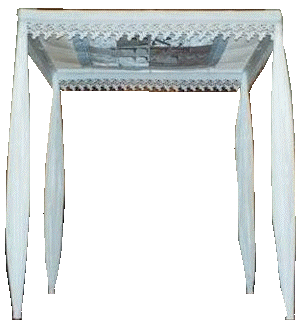Out with the old, in with the new
 I realize that this "Modern Love" essay in The New York Times is not a news story and we try to stick to the news here at GetReligion. But it could have been a news story and that is my point, sort of. Give it a read and tell me that quotations from this essay are not going to show up soon in a fundraising letter written by Dr. James Dobson.
I realize that this "Modern Love" essay in The New York Times is not a news story and we try to stick to the news here at GetReligion. But it could have been a news story and that is my point, sort of. Give it a read and tell me that quotations from this essay are not going to show up soon in a fundraising letter written by Dr. James Dobson.
Meanwhile, I think this piece by Alison Luterman actually offers some newsy insights into the border-crossing beliefs of many people in the religious left.
There is more to this than sex, obviously. The marriage rite described in this essay contains a wide range of symbols, statements and actions that have doctrinal content. This could have been a news story, with commentary from priests and scholars on both sides of the Catholic (and Jewish?) groups involved.
I mean, how does a huppah (pictured) end up covering a sort-of-Catholic altar for a Catholic-Jewish service of Holy Communion? What does all of this mean to the participants? Are they actually Unitarians? Episcopalians? Modern pagans?
The huppah, in the Jewish tradition, is a canopy, often made from a prayer shawl, whose corners are held up on poles by four people close to the wedding couple. But these grooms, Randy and Michael, were Catholic -- super Catholic in fact. Michael had been a seminarian, preparing for the Jesuit priesthood in a former life, and Randy a Benedictine monk, deeply steeped in prayer, contemplation and service.
So why, as my Brooklyn-raised father carefully asked, would they want a huppah? The thing is, when you put "Catholic" and "gay wedding" together, you come out with one inevitable conclusion: an extravaganza of rituals.
Old traditions and doctrines must die or, at least, become voluntary. New doctrines and rites must be born.
That's a story, especially when it gets major play in The New York Times. This is an issue worth taking seriously, a story -- perhaps -- about the real emerging church.